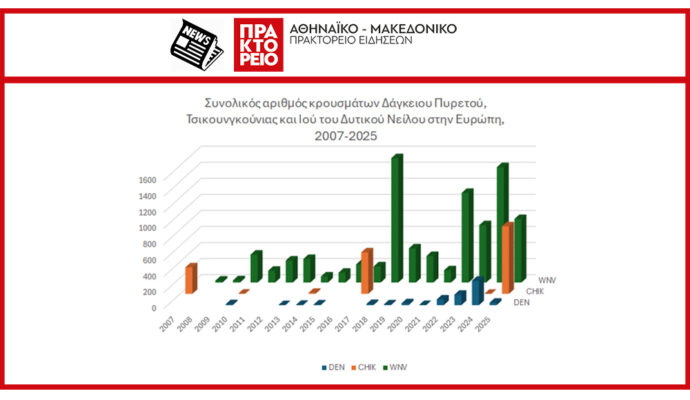The actions of the mosquito control project of the Region of Central Macedonia, which started at the beginning of April, have been completed for this year. The project is a well-organized action, scientifically supported by the Aristotle University of Thessaloniki and the Hellenic CDC, while the General Directorate of Public Health of the Region of Central Macedonia is responsible for the design of the program.
This year the following have been carried out:
- 123.000 larval sampling in over 20,000 potentially recorded mosquito breeding sites in about 160.000 acres of wetland systems, 420.000 acres of agricultural system, 7.000 km of canals and streams
- 15.000 acres of sprayed larvicide applications
- 5,000 acres of drone spray applications
- 182 surface spray applications (residual spraying)
- 53 site spray applications (ULV)
- Interventions in 87.000 stormwater manholes in major cities
- Interventions in 22.000 private cesspools in 126 settlements at high risk of West Nile virus infection
- 969 sampling of mosquito larvae
- 689 analyses of mosquito larvae for the detection of West Nile Virus
- 750 blood samples and analyses in sentinel chickens in 50 settlements for the detection of WNV
This year’s levels of nuisance were low, with the exception of a 15-day period following the very significant rainfall that occurred in June across the region. The average sampling rate for adult mosquito sampling was 20% lower than the average over the last five years. In relation to the endemic West Nile Virus disease, this year, based on the low circulation of the pathogen in mosquitoes and sentinel chickens already from mid-June, we expected a lower number of cases, in the range of 20%-30% compared to 2022, which was confirmed, as today at the end of the active transmission period of West Nile Virus, the total number of cases in the Region of Central Macedonia is 73, compared to 235 cases in 2022. Finally, regarding other mosquito-borne diseases, no malaria cases were recorded, as well as no mosquitoes of the non-native species Aedes aegypti were detected in any trap.















